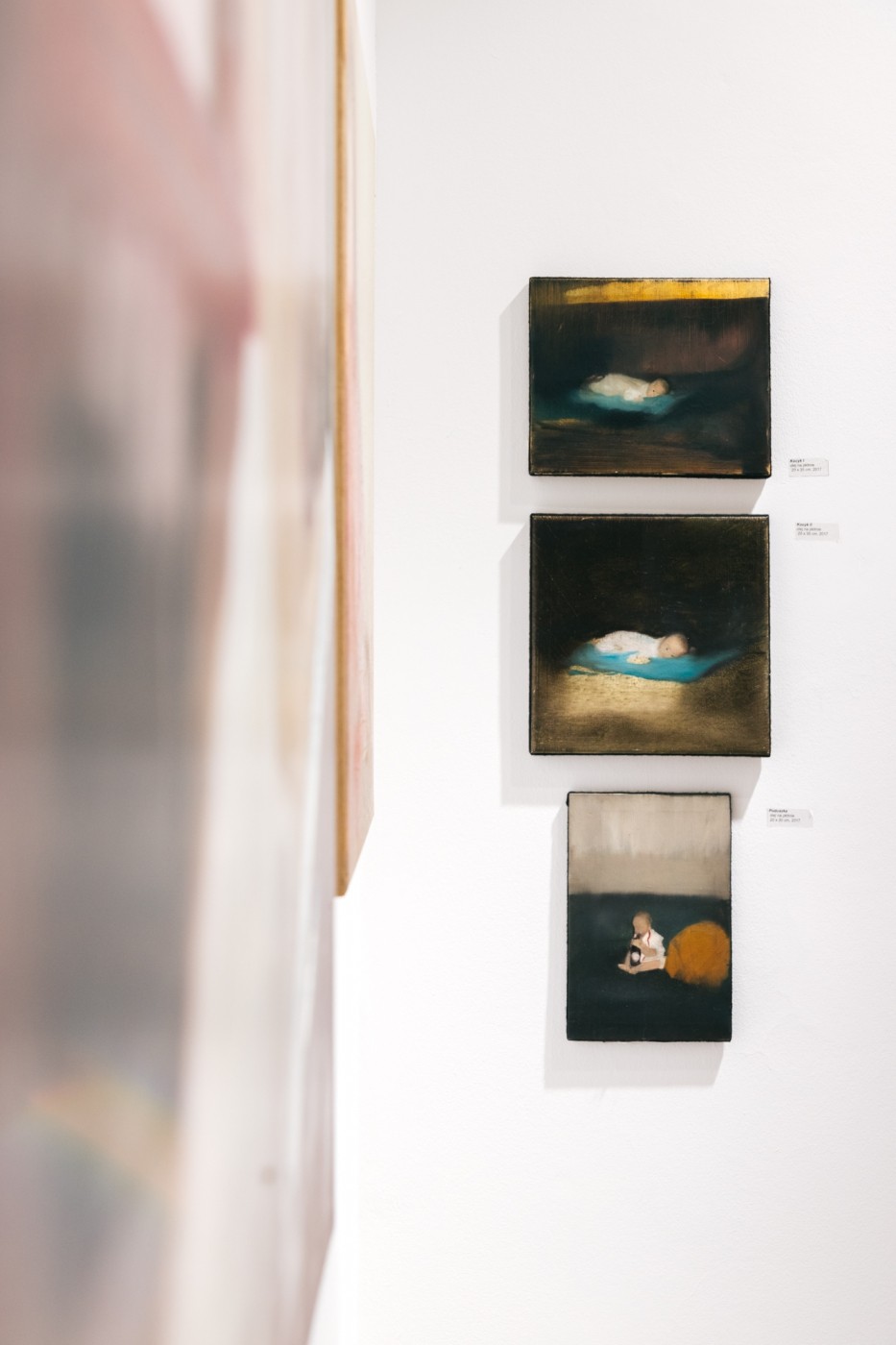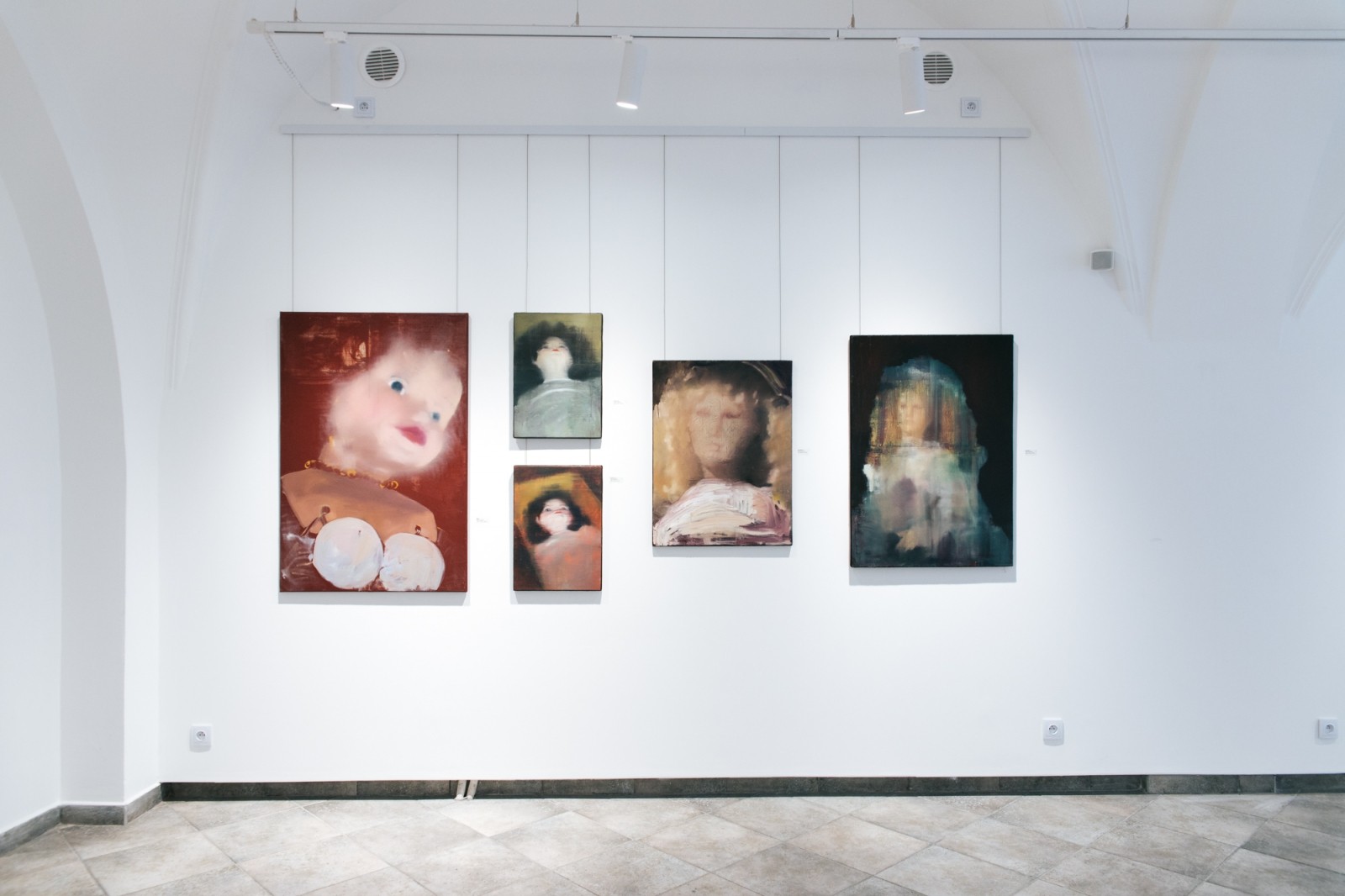About
Agnieszka Apoznańska – Salt in the Eye
When an artist starts working, they don't always know exactly what they want. They sweep their eyes over and take in the field of vision and the field of the visible. Something will catch their eye, something will escape their vision; it is no use seeking objectivity in this gaze/sight. In fact, the hardest thing is to say why exactly "this" thing and not something else. Czesław Miłosz chose the eponymous This as the title of one of his last poetry collections, hiding in it what is coming, inevitable, and final. The old writer had somehow been reconciled with "this" – his own death.
We may reasonably ask what "this" is in this case, the eponymous "salt in the eye". Salt on the tongue is a sense of taste, often its essence, even. But salt in the eye must irritate, disturb, sting. It's best to wash it away, rinse it out, remove it as quickly as possibly; to hastily return to normality – that is, to a routine view of things and the world. After all, it is better this way, more normal, ordinary. But is this how it must and should be in art? Not really, no! Art looks for this salt and wants to find it, and if it finds it, it creates images that stay with us, and even though it doesn't always work out this way, sometimes for a long time. These are happy moments in the life of the artist and the viewers.
Agnieszka Apoznańska admits: "When I reach for a theme, I don't always know why that specific thing interests me. Through the painting process, working in series on a given issue, I search for and bring out situations that might alleviate the creative need. Sometimes the 'breath' comes after a few paintings; sometimes whole series are needed. The search for form, remembered fragments of reality recorded in a painting, which is also a thing in itself."
And what can become this theme? A photograph from my own or someone else's childhood. A frequently random moment caught with the press of a shutter, or vague memories of gallery paintings by masters great and small, which overlap each other under the eyelids, creating a kind of painted palimpsests, later transferred onto canvas. The recollection of a person and figure remembered in the most ordinary surroundings, among ordinary things that become extraordinary with time and changing circumstances. Memory plays with us, our thoughts, and recollections.
The realistic but blurred painting technique with fading contours and colours Apoznańska has adopted serves well to depict this state of a kind of suspension, uncertainty, and indefiniteness. The images are as if moved, or fogged over, slightly "shifted" towards the unreal, elusive, untouchable. A spectral painting, a ghost painting, the afterimage of the visible, seemingly stopped but without certainty that it will remain so; it can continue to fade before our eyes and we don't know whether this process will stop or if it will last forever, remaining not completely seen in its own way. And perhaps it is the eponymous salt in the eye that prevents us from seeing everything clearly.
Bogusław Deptuła
Agnieszka Apoznańska (born 1995) – graduated in painting from the studio of Prof. Łukasz Huculak at the Academy of Art and Design in Wrocław. Winner of scholarships awarded by the Mayor of the City of Wrocław and the Minister of Culture and National Heritage. Winner of the GRAND PRIX at the ATTITUDES 7 painting competition. She lives and works in Wrocław.
Display











































